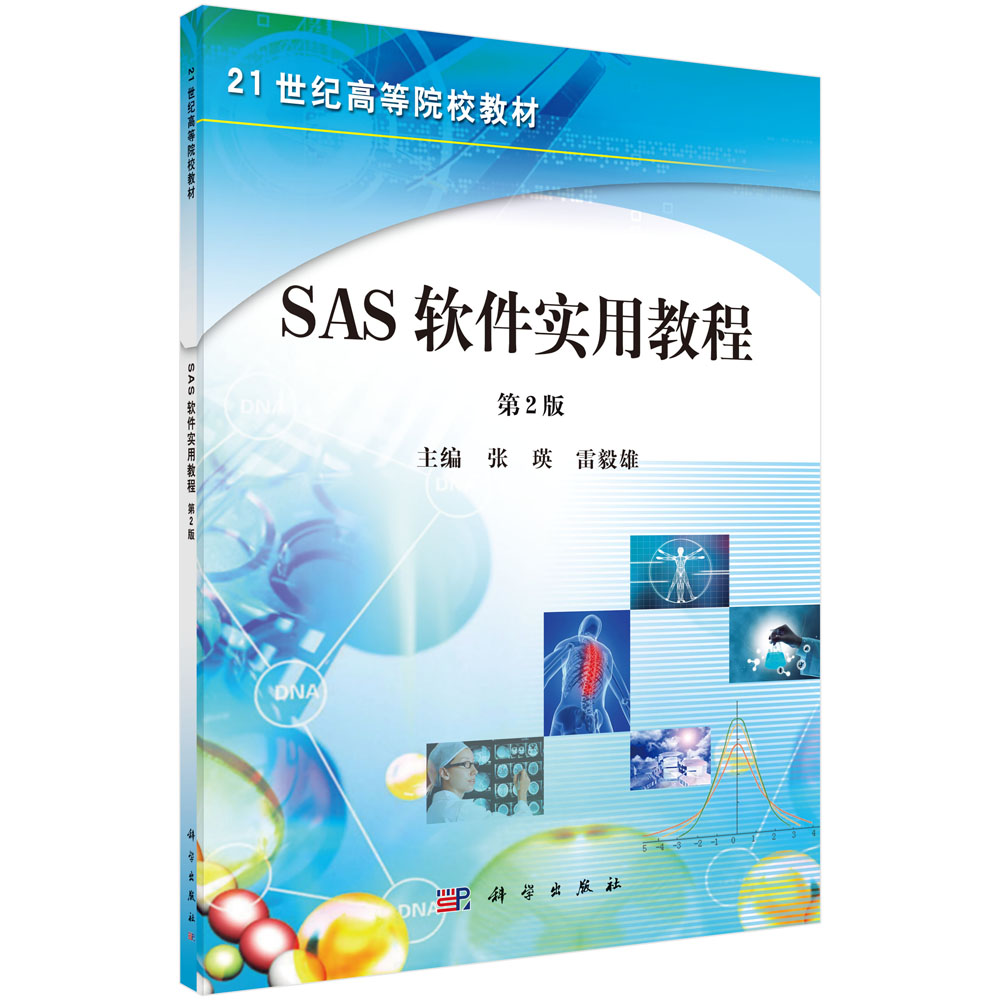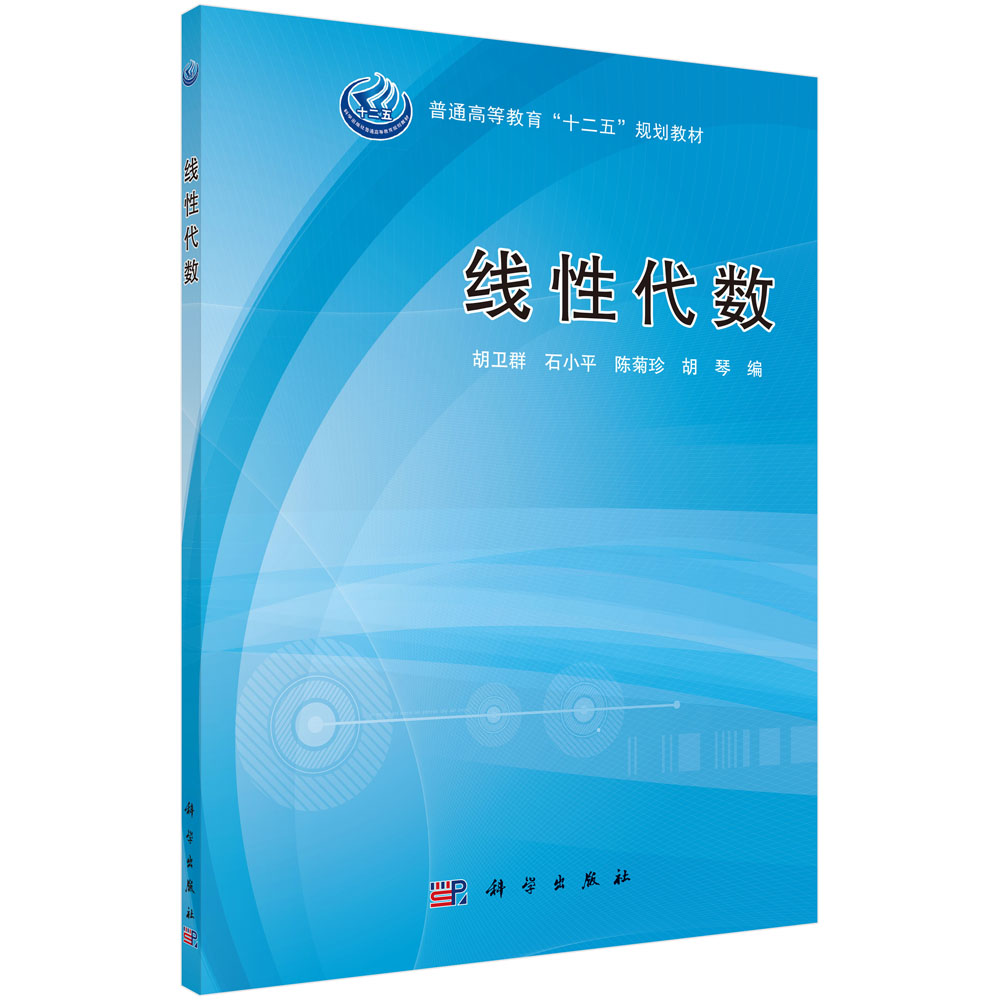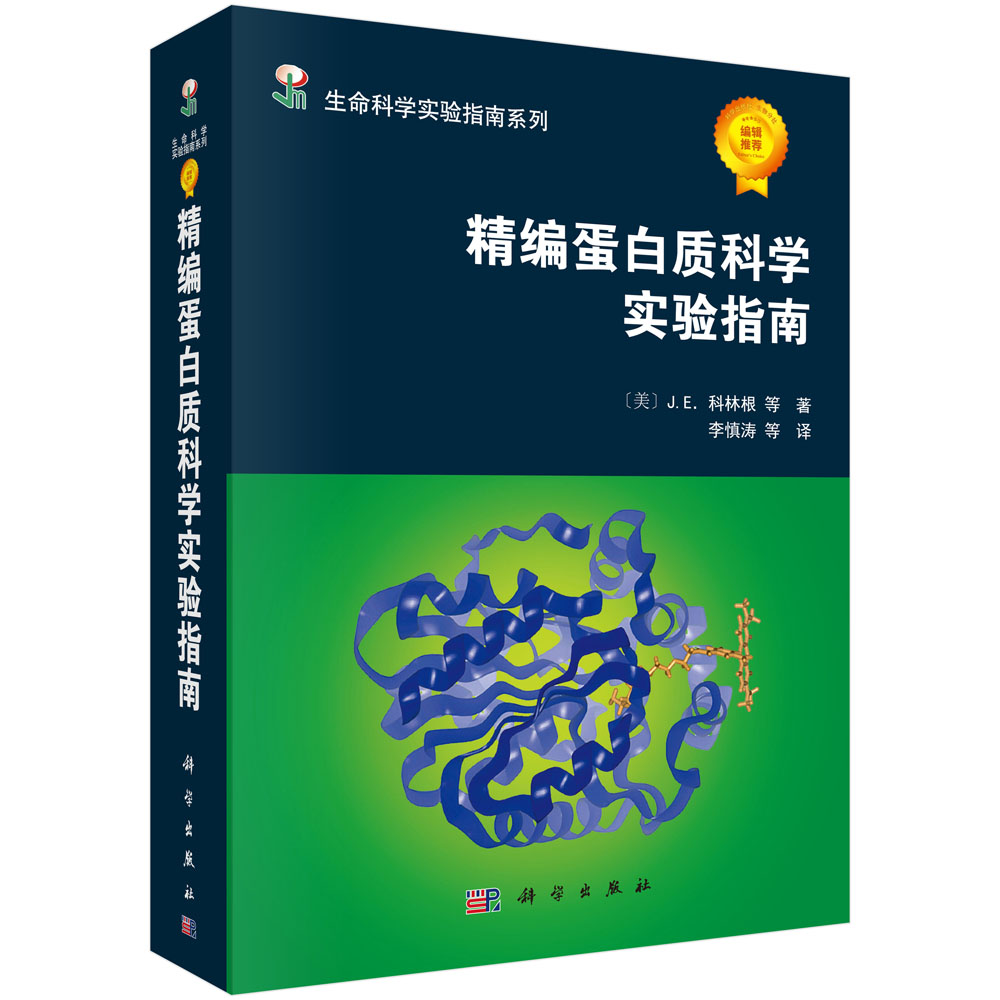本书为中英双语,内容包括细菌学和病毒学两大部分。兽医微生物学领域的发展日新月异,本书对微生物的分类命名、分子微生物学、流行病学和诊断方法等内容进行了更新。为了进一步贯彻落实乡村振兴战略,讲好“三农”故事,本书的相关章节中引入了抗菌药物耐药性、兽医公共卫生、绿色生态低碳健康养殖等课程思政内容。本书聚焦兽医学和畜牧学领域,以简洁明了的形式介绍了微生物形态学、遗传学、耐药性、免疫学、生物安全和疫病防控等内容。兽医微生物学的最新进展也在相关章节进行了体现。本书还提供了在线课程、彩图、视频和习题等数字资源,以方便读者阅读理解。
样章试读
目录
- 目录
前言
绪论 1
第1节 兽医微生物学发展历史 1
第2节 兽医微生物学 3
第1章 细菌的形态和结构 5
第1节 细菌的大小和形态 5
第2节 细菌的基本结构和特殊结构 7
第3节 革兰氏染色 8
第4节 细菌细胞壁的主要功能 9
第2章 细菌的生长繁殖与生态 13
第1节 细菌的代谢过程 13
第2节 细菌的生长繁殖 16
第3节 细菌的人工培养 17
第4节 细菌群落生长的调控 18
第5节 细菌的生态 20
第3章 消毒、灭菌及兽医微生物实验室生物安全 23
第1节 物理消毒法 23
第2节 化学消毒法 26
第3节 抗生素和细菌素 27
第4节 兽医微生物实验室生物安全 27
第4章 细菌的感染与致病机理 30
第1节 细菌的致病性和毒力 30
第2节 细菌的毒力因子及分泌系统 33
第3节 机会致病菌 36
第5章 细菌的遗传变异 38
第1节 细菌常见的变异现象 38
第2节 细菌遗传的物质基础 38
第3节 细菌变异的机制 41
第6章 细菌的分类命名 44
第1节 细菌的分类地位 44
第2节 细菌的命名 45
第3节 细菌分类鉴定的标准 46
第4节 细菌的鉴定程序 46
第7章 革兰氏阳性球菌 48
第1节 葡萄球菌属 48
第2节 链球菌属 50
第8章 肠杆菌科 53
第1节 埃希菌属 53
第2节 沙门菌属 56
第3节 耶尔森菌属 57
第9章 弧菌科及气单胞菌科 59
第1节 弧菌科 59
第2节 气单胞菌科 61
第10章 巴氏杆菌科 63
第1节 巴氏杆菌属 63
第2节 曼氏杆菌属 65
第3节 放线杆菌属 66
第4节 格拉菌属 67
第5节 嗜血杆菌属 70
第6节 禽杆菌属 70
第7节 里默杆菌属 72
第11章 革兰氏阴性需氧杆菌 73
第1节 布氏杆菌属 73
第2节 假单胞菌属 76
第3节 伯克霍尔德菌属 77
第4节 博德特菌属 78
第5节 弗朗西斯菌属 79
第6节 不动杆菌属 80
第12章 革兰氏阴性微需氧菌和厌氧菌 83
第1节 弯曲菌属 83
第2节 螺杆菌属 84
第13章 革兰氏阳性无芽胞杆菌 86
第1节 李氏杆菌属 86
第2节 丹毒丝菌属 89
第14章 革兰氏阳性产芽胞杆菌 91
第1节 芽孢杆菌属 91
第2节 梭菌属 94
第15章 分枝杆菌属及相似属 98
第1节 分枝杆菌属 98
第2节 放线菌属 101
第3节 嗜皮菌属 103
第16章 螺旋体 106
第1节 螺旋体的一般特性 106
第2节 疏螺旋体属 108
第3节 短螺旋体属 109
第4节 钩端螺旋体属 110
第17章 支原体 113
第1节 支原体的一般特性 113
第2节 猪的支原体 116
第3节 禽的支原体 119
第4节 牛羊的支原体 121
第5节 嗜血支原体 122
第18章 立克次体和衣原体 125
第1节 立克次体 125
第2节 衣原体 129
第19章 病毒的结构和分类 132
第1节 病毒的结构特征 132
第2节 病毒的化学组成 135
第3节 病毒的分类 136
第20章 病毒的复制 139
第1节 一步生长曲线 139
第2节 吸附、穿入与脱壳 140
第3节 生物合成 142
第4节 组装与释放 143
第21章 病毒的变异和演化 144
第1节 突变 144
第2节 诱变 146
第3节 基因重组 147
第4节 病毒组分之间的相互作用 149
第5节 遗传变异与病毒演化 149
第22章 病毒与细胞的相互作用 153
第1节 病毒的细胞培养 153
第2节 病毒与细胞的相互作用 155
第3节 病毒引致的非杀细胞变化 158
第23章 病毒的致病机理 159
第1节 病毒的入侵、扩散和排放 159
第2节 病毒的持续性感染 161
第3节 病毒感染对宿主组织和器官的损伤 162
第4节 病毒感染对免疫系统的损伤 163
第24章 病毒的检测 166
第1节 病毒的分离和鉴定 166
第2节 病毒滴度的测定 169
第3节 病毒颗粒的检测 170
第4节 病毒感染的血清学检测 170
第5节 病毒核酸的检测 174
第25章 双链DNA病毒 176
第1节 痘病毒科 176
第2节 非洲猪瘟病毒科 179
第3节 腺病毒科 183
第26章 疱疹病毒目 187
第1节 疱疹病毒科的主要特征 187
第2节 牛传染性鼻气管炎病毒 189
第3节 伪狂犬病毒 190
第4节 禽传染性喉气管炎病毒 191
第5节 马立克病病毒 192
第6节 鸭瘟病毒 193
第27章 单链DNA病毒 195
第1节 细小病毒科 195
第2节 圆环病毒科 200
第3节 细环病毒科 202
第28章 逆转录病毒 204
第1节 逆转录病毒科的主要特征 204
第2节 甲型逆转录病毒属 205
第3节 乙型逆转录病毒属 207
第4节 丙型逆转录病毒属 209
第5节 丁型逆转录病毒属 210
第6节 慢病毒属 211
第29章 双链RNA病毒 215
第1节 呼肠孤病毒科 215
第2节 双RNA病毒科 218
第30章 单负链病毒目 221
第1节 副黏病毒科 221
第2节 弹状病毒科 225
第3节 波纳病毒科 226
第31章 分节段的负链RNA病毒 228
第1节 正黏病毒科 228
第2节 近布尼亚病毒科 231
第3节 白纤病毒科 232
第4节 内罗病毒科 234
第5节 汉坦病毒科 234
第32章 套式病毒目 236
第1节 冠状病毒科 236
第2节 动脉炎病毒科 245
第3节 托巴套式病毒科 247
第33章 微RNA病毒目 248
第1节 微RNA病毒科 248
第2节 嵌杯病毒科 253
第34章 其他正链RNA病毒 256
第1节 戊肝病毒科 256
第2节 披膜病毒科 256
第3节 黄病毒科 258
Contents
Preface
Introduction 1
Section 1 History of veterinary microbiology 1
Section 2 Veterinary microbiology 3
Chapter 1 Bacterial structure and morphology 5
Section 1 Bacterial size and morphology 5
Section 2 Basic and special structures of bacteria 7
Section 3 Gram staining 8
Section 4 The main functions of bacterial cell walls 9
Chapter 2 Bacterial growth and ecology 13
Section 1 Bacterial metabolism 13
Section 2 Growth of bacteria 16
Section 3 Cultivation of bacteria 17
Section 4 Regulation of bacterial growth 18
Section 5 The ecology of bacteria 20
Chapter 3 Disinfection, sterilization and biosecurity in the veterinary microbiology laboratory 23
Section 1 Physical disinfection 23
Section 2 Chemical disinfection 26
Section 3 Antibiotics and bacteriocins 27
Section 4 Biosafety of veterinary microbiology laboratory 27
Chapter 4 Bacterial infection and pathogenic mechanisms 30
Section 1 Pathogenicity and virulence of bacteria 30
Section 2 Virulence factors and secretion systems of bacteria 33
Section 3 Opportunistic pathogens 36
Chapter 5 Genetic variations of bacteria 38
Section 1 Common phenomena of bacterial variations 38
Section 2 Material basis of bacterial inheritance 38
Section 3 Mechanism of bacterial variations 41
Chapter 6 Taxonomy and nomenclature of bacteria 44
Section 1 Taxonomy of bacteria 44
Section 2 Nomenclature of bacteria 45
Section 3 Criteria for taxonomic identi.cation of bacteria 46
Section 4 Procedures of bacterial identi.cation 46
Chapter 7 Gram-positive cocci 48
Section 1 Staphylococcus 48
Section 2 Streptococcus 50
Chapter 8 Enterobacteriaceae 53
Section 1 Escherichia 53
Section 2 Salmonella 56
Section 3 Yersinia 57
Chapter 9 Vibrionaceae and Aeromonadaceae 59
Section 1 Vibrionaceae 59
Section 2 Aeromonadaceae 61
Chapter 10 Pasteurellaceae 63
Section 1 Pasteurella 63
Section 2 Mannheimia 65
Section 3 Actinobacillus 66
Section 4 Glaesserella 67
Section 5 Haemophilus 70
Section 6 Avibacterium 70
Section 7 Riemerella 72
Chapter 11 Gram-negative aerobic bacilli 73
Section 1 Brucella 73
Section 2 Pseudomonas 76
Section 3 Burkholderia 77
Section 4 Bordetella 78
Section 5 Francisella 79
Section 6 Acinetobacter 80
Chapter 12 Gram-negative microaerobes and anaerobes 83
Section 1 Campylobacter 83
Section 2 Helicobacter 84
Chapter 13 Non-spore-forming Gram-positive bacilli 86
Section 1 Listeria 86
Section 2 Erysipelothrix 89
Chapter 14 Spore-forming Gram-positive bacilli 91
Section 1 Bacillus 91
Section 2 Clostridium 94
Chapter 15 Mycobacteria and similar genera 98
Section 1 Mycobacterium 98
Section 2 Actinomyces 101
Section 3 Dermatophilus 103
Chapter 16 Spirochaete 106
Section 1 General characteristics of spirochaetes 106
Section 2 Borrelia 108
Section 3 Brachyspira 109
Section 4 Leptospira 110
Chapter 17 Mycoplasma 113
Section 1 General characteristics of Mycoplasma 113
Section 2 Mycoplasma in pigs 116
Section 3 Mycoplasma in poultries 119
Section 4 Mycoplasma in bovine and caprine 121
Section 5 Mycoplasma haemophilus 122
Chapter 18 Rickettsia and Chlamydia 125
Section 1 Rickettsia 125
Section 2 Chlamydia 129
Chapter 19 Structure and taxonomy of viruses 132
Section 1 Structural characteristics of viruses 132
Section 2 Chemical composition of viruses 135
Section 3 Taxonomy of viruses 136
Chapter 20 Virus replication 139
Section 1 One-step growth curve 139
Section 2 Attachment, penetration and uncoating 140
Section 3 Biosynthesis 142
Section 4 Assembly and release 143
Chapter 21 Virus variation and evolution 144
Section 1 Mutation 144
Section 2 Mutagenesis 146
Section 3 Recombination 147
Section 4 Interactions among the virus components 149
Section 5 Genetic variation and viral evolution 149
Chapter 22 Interaction between virus and cell 153
Section 1 Cell culture of viruses 153
Section 2 Virus-cell interactions 155
Section 3 Virus-induced noncytocidal changes 158
Chapter 23 Pathogenic mechanisms of viruses 159
Section 1 Virus invasion, spreading and shedding 159
Section 2 Persistent virus infection 161
Section 3 Damage to host tissues and organs by virus
infection 162
Section 4 Damage to the immune system by virus infection 163
Chapter 24 Virus detection 166
Section 1 Virus isolation and identi.cation 166
Section 2 Determination of virus titers 169
Section 3 Detection of virus particles 170
Section 4 Serologic detection of viruses 170
Section 5 Viral nucleic acid detection 174
Chapter 25 Double-stranded DNA viruses 176
Section 1 Poxviridae 176
Section 2 Asfarviridae 179
Section 3 Adenoviridae 183
Chapter 26 Herpesvirales 187
Section 1 Main features of Herpesviridae 187
Section 2 Infectious bovine rhinotracheitis virus 189
Section 3 Pseudorabies virus 190
Section 4 Avian infectious laryngotracheitis virus 191
Section 5 Marek’s disease virus 192
Section 6 Duck plague virus 193
Chapter 27 Single-stranded DNA viruses 195
Section 1 Parvoviridae 195
Section 2 Circoviridae 200
Section 3 Anelloviridae 202
Chapter 28 Retroviruses 204
Section 1 Main characteristics of Retroviridae 204
Section 2 Alpharetrovirus 205
Section 3 Betaretrovirus 207
Section 4 Gammaretrovirus 209
Section 5 Deltaretrovirus 210
Section 6 Lentivirus 211
Chapter 29 Double-stranded RNA viruses 215
Section 1 Reoviridae 215
Section 2 Birnaviridae 218
Chapter 30 Mononegavirales 221
Section 1 Paramyxoviridae 221
Section 2 Rhabdoviridae 225
Section 3 Bornaviridae 226
Chapter 31 Segmented negative-stranded RNA viruses 228
Section 1 Orthomyxoviridae 228
Section 2 Peribunyaviridae 231
Section 3 Phenuiviridae 232
Section 4 Nairoviridae 234
Section 5 Hantaviridae 234
Chapter 32 Nidovirales 236
Section 1 Coronaviridae 236
Section 2 Arteriviridae 245
Section 3 Tobaniviridae 247
Chapter 33 Picornavirales 248
Section 1 Picornaviridae 248
Section 2 Caliciviridae 253
Chapter 34 Other positive-stranded RNA viruses 256
Section 1 Hepeviridae 256
Section 2 Togaviridae 256
Section 3 Flaviviridae 258





























